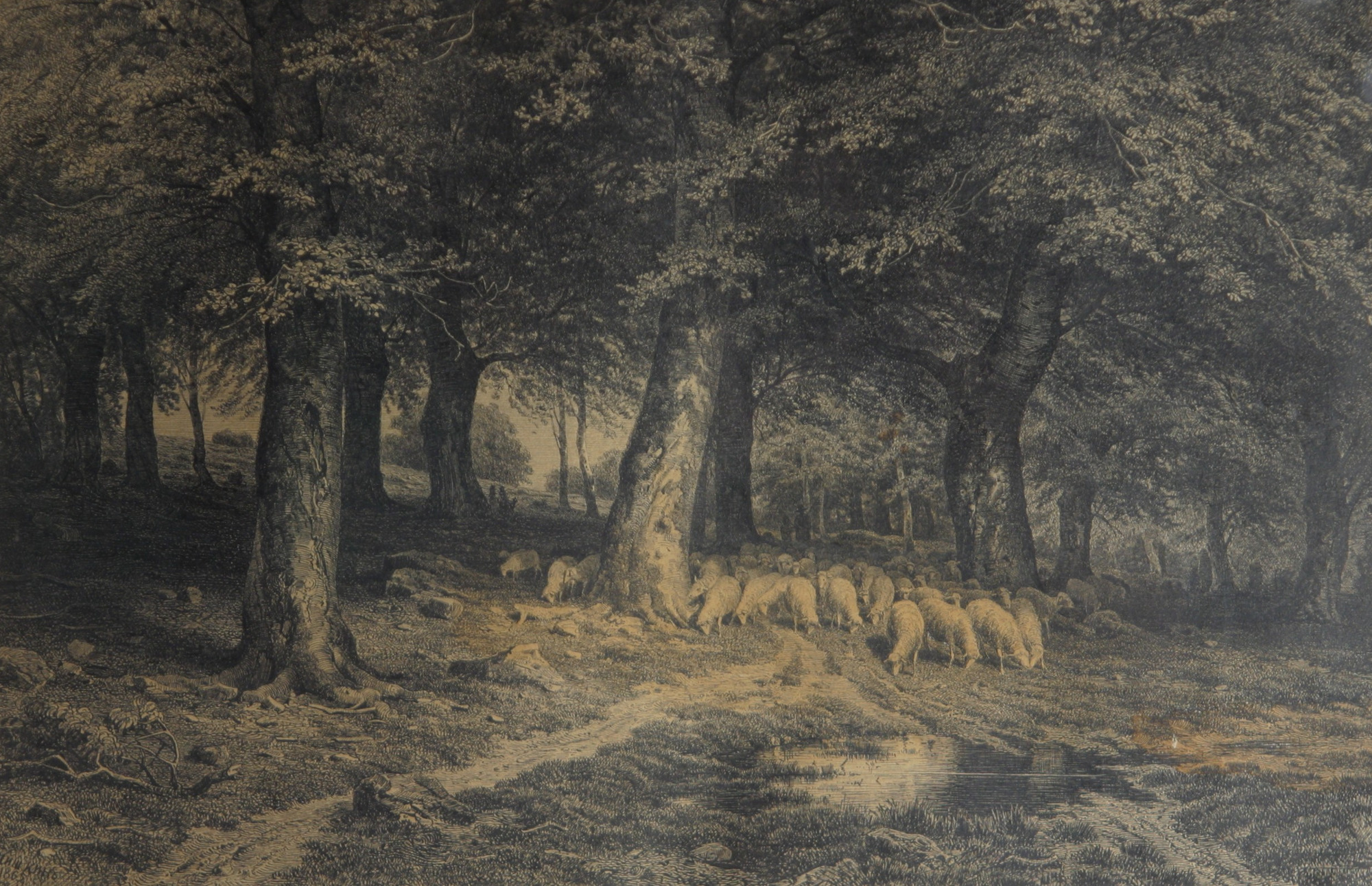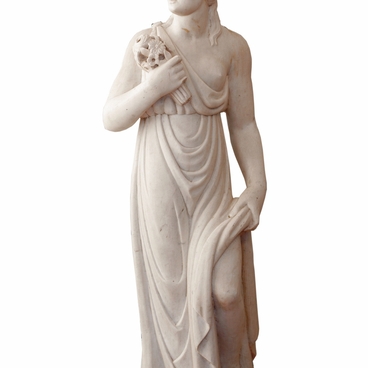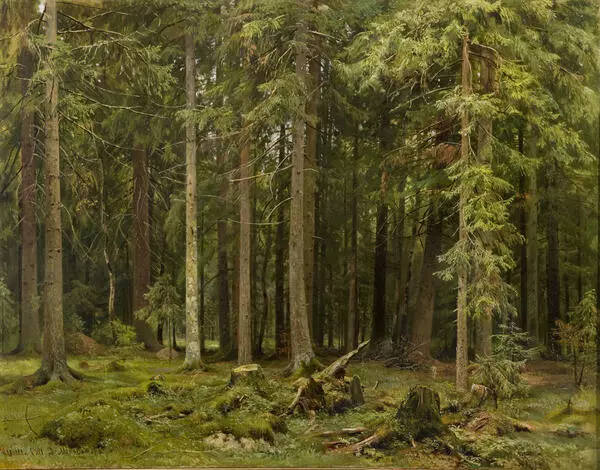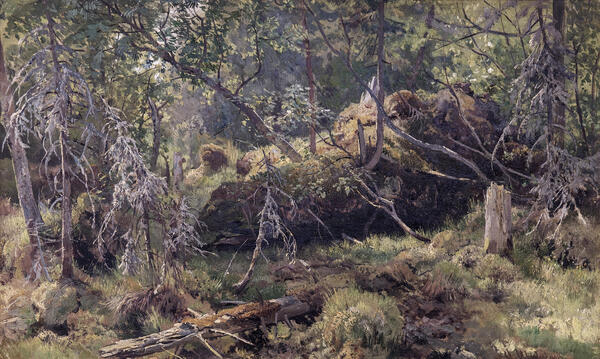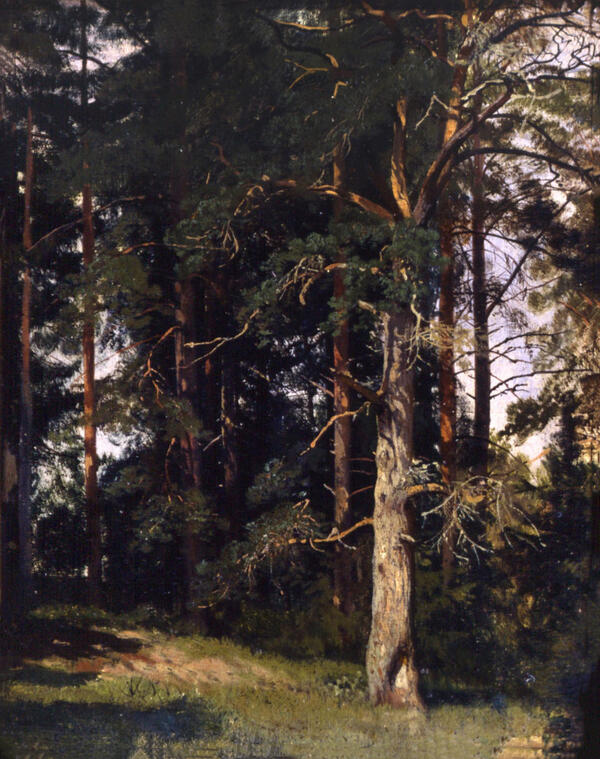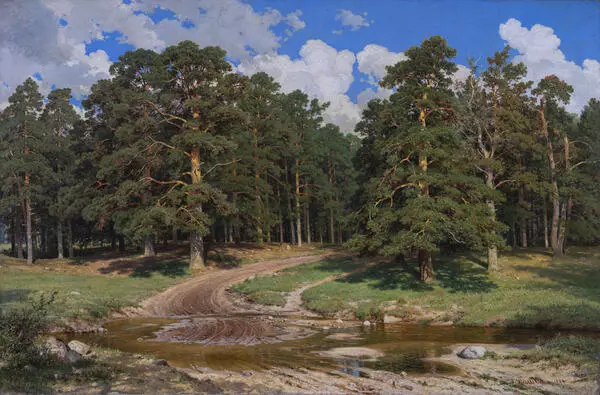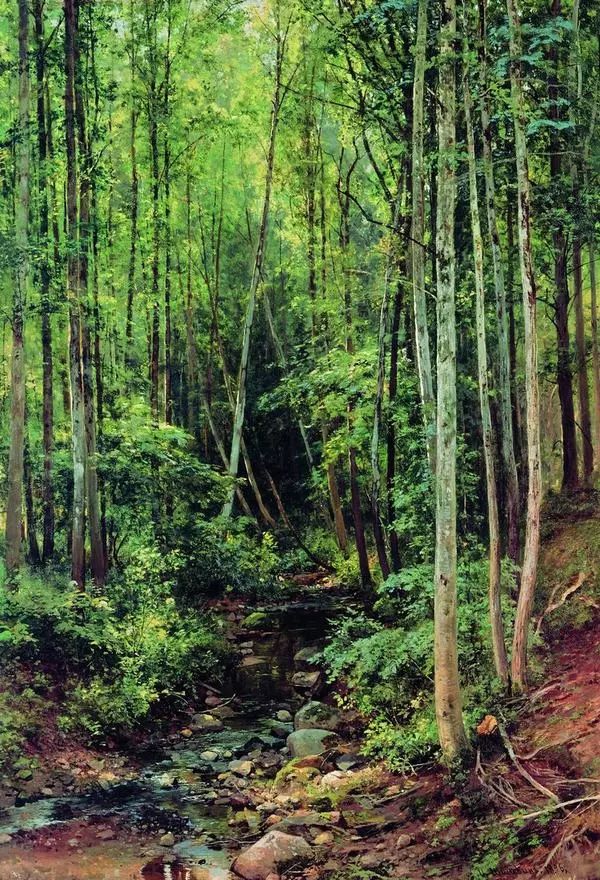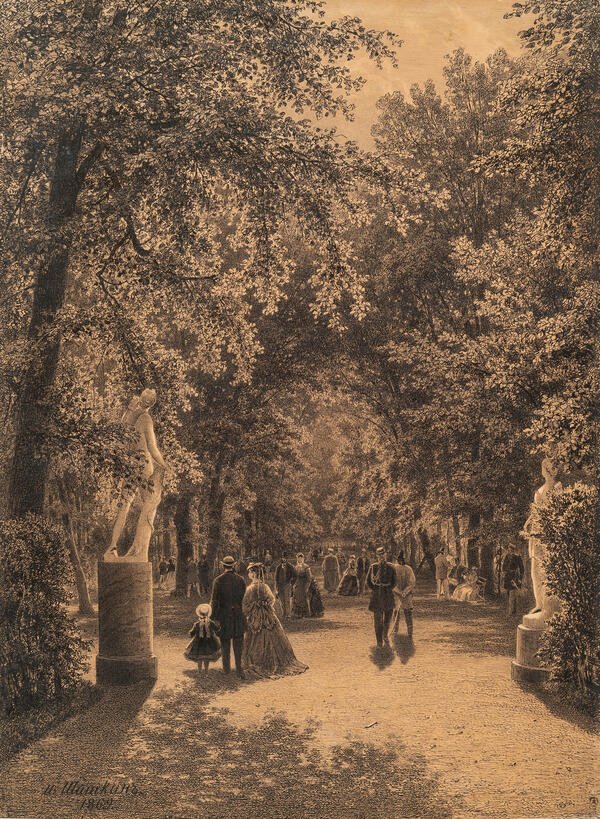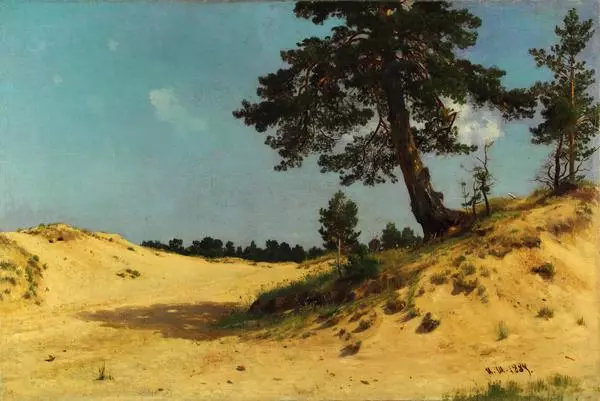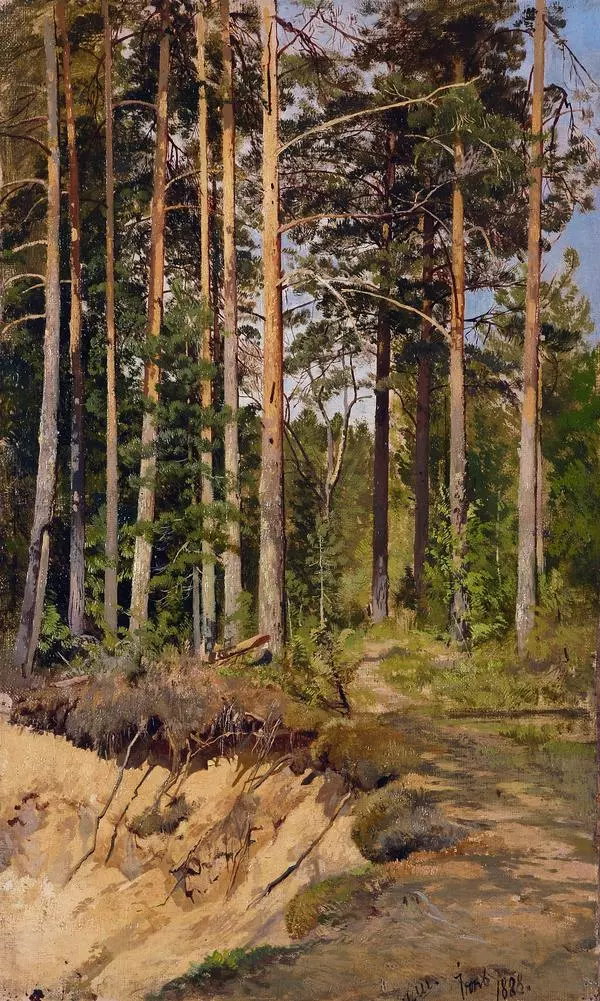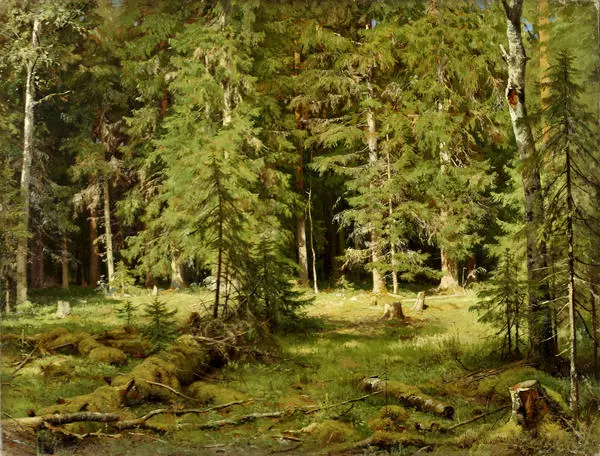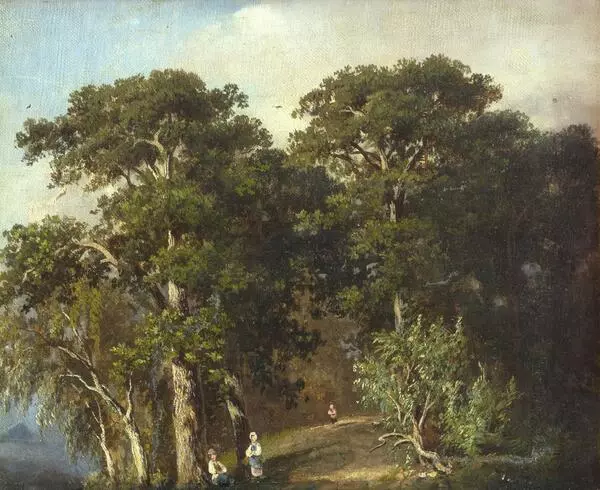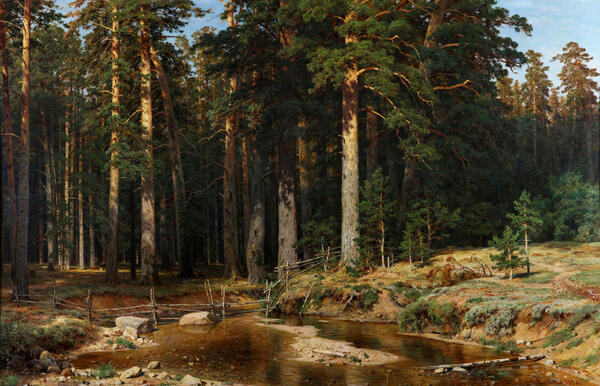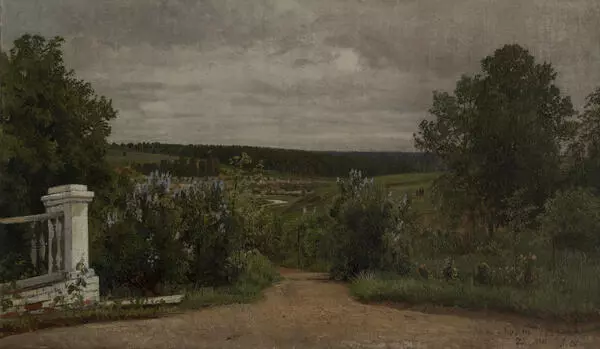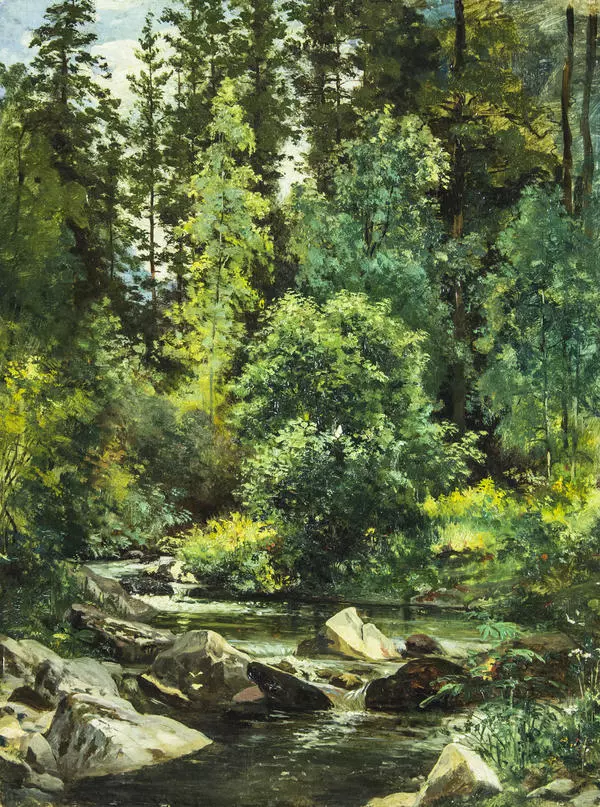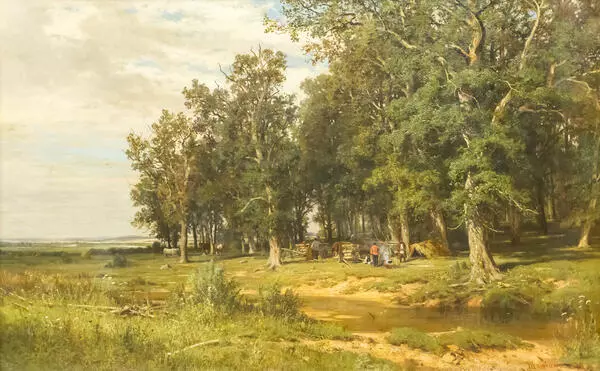The work of the artist Ivan Ivanovich Shishkin (1832-1898) “A flock of sheep in the forest” (1865) entered the museum from the Karacharovsky estate of the Counts Uvarov in 1918. Ivan Shishkin is a Russian landscape painter, painter, draughtsman and engraver-aquafortist. Academician (1864), professor (1873), teacher of the landscape workshop in the Academy of Arts. He revealed the beauty of Russian nature in a heartfelt way. Shishkin originated from Yelabuga, Vyatka province. In his childhood the artist fell in love with the region, rich in mighty forests and endless fields. Shishkin’s contemporaries called him the “King of the Forest”.
The artist became famous during his studies at the St. Petersburg Academy of Arts; he got silver and gold medals at exhibitions, and his works began to be recognized and acquired. His most widely known painting is “Morning in the Pine Forest” (1889). This landscape is enlivened by the figures of bears painted by the artist Konstantin Savitsky. At that time, Shishkin himself did not yet have the perfect ability to depict animals. He later learned this in Munich and Zurich. But Shishkin was not only a painter, but also a professional draughtsman and engraver. Systematically, he began to work in this technique since 1860s. In 1863, he learned the etching technique at Rudolf Koller (Switzerland), and subsequently became the largest master of engraving and lithography in Russia in the second half of the XIX century. He achieved perfection in the mastery of etching techniques and left an extensive engraving body of work.
The researchers indicate that he created 100 etchings and 68 lithographs. The presented original work is executed with ink and a pen. The painting depicts a flock of sheep among mighty trees with tightly fused crowns and colorful shapes of trunks. The trees crowns are so thick that they do not allow sunlight to pass through and create twilight. The forest clearing depicted in the foreground is illuminated by the sun’s rays falling on the velvety grass. You can see how much attention the author pays to details not only in painting, but also in graphics. Every leaf of the tree, every blade of grass and root at the ground are spelled out in the drawing. Not only light and shadow are well worked out in the landscape, but also semitones, which give a feeling of color. Shishkin’s drawing “A flock of sheep in the forest” gives an opportunity to get acquainted with this rarely exhibited, less well-known facet of the master’s work (since graphic works are not often exhibited in expositions).
The artist became famous during his studies at the St. Petersburg Academy of Arts; he got silver and gold medals at exhibitions, and his works began to be recognized and acquired. His most widely known painting is “Morning in the Pine Forest” (1889). This landscape is enlivened by the figures of bears painted by the artist Konstantin Savitsky. At that time, Shishkin himself did not yet have the perfect ability to depict animals. He later learned this in Munich and Zurich. But Shishkin was not only a painter, but also a professional draughtsman and engraver. Systematically, he began to work in this technique since 1860s. In 1863, he learned the etching technique at Rudolf Koller (Switzerland), and subsequently became the largest master of engraving and lithography in Russia in the second half of the XIX century. He achieved perfection in the mastery of etching techniques and left an extensive engraving body of work.
The researchers indicate that he created 100 etchings and 68 lithographs. The presented original work is executed with ink and a pen. The painting depicts a flock of sheep among mighty trees with tightly fused crowns and colorful shapes of trunks. The trees crowns are so thick that they do not allow sunlight to pass through and create twilight. The forest clearing depicted in the foreground is illuminated by the sun’s rays falling on the velvety grass. You can see how much attention the author pays to details not only in painting, but also in graphics. Every leaf of the tree, every blade of grass and root at the ground are spelled out in the drawing. Not only light and shadow are well worked out in the landscape, but also semitones, which give a feeling of color. Shishkin’s drawing “A flock of sheep in the forest” gives an opportunity to get acquainted with this rarely exhibited, less well-known facet of the master’s work (since graphic works are not often exhibited in expositions).
